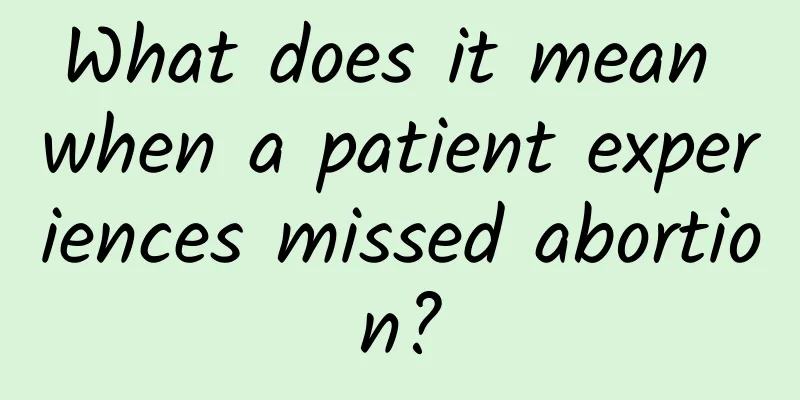Drug treatment of endometrial tuberculosis

|
Endometrial tuberculosis often follows pulmonary tuberculosis, renal tuberculosis, gastrointestinal tuberculosis, bone or joint tuberculosis, etc., and occasionally can be part of systemic miliary tuberculosis. When tuberculosis bacteria infect the body, they generally do not develop the disease immediately, but go through a period of incubation. During the incubation period, when the body is in a state of poor resistance, tuberculosis bacteria can invade the endometrium and eventually affect the basal layer of the endometrium. So, what are the drug treatments for endometrial tuberculosis? Drug treatment The use of anti-tuberculosis drugs is an important measure to treat tuberculosis. (1) Commonly used anti-tuberculosis drugs: Ideal anti-tuberculosis drugs have bactericidal, sterilizing or strong antibacterial effects, low toxicity, few adverse reactions, are not prone to produce drug-resistant strains, are inexpensive, easy to use, and have sufficient supply. After oral or injection, the drug can reach an effective concentration in the blood and can penetrate into phagocytes, the peritoneal cavity or cerebrospinal fluid, with rapid and long-lasting efficacy. Currently, commonly used anti-tuberculosis drugs are divided into 4 categories: ① Those with similar efficacy against intracellular and extracellular bacteria, such as rifampicin, isoniazid, ethionamide and cycloserine; ② Those with a dominant extracellular effect, such as streptomycin, kanamycin, capreomycin and puromycin; ③ Those with dominant intracellular effects, such as pyrazinamide; ④ Antibacterial drugs, such as sodium p-aminosalicylate, ethambutol and thiosemicarbazide. Streptomycin, isoniazid and sodium para-aminosalicylate are called first-line drugs; other drugs are called second-line drugs. In clinical practice, first-line drugs are generally used first. When first-line drugs produce resistant strains or patients cannot tolerate them due to toxic reactions, 1 to 2 second-line drugs can be used instead. (2) Chemotherapy regimen: Understanding the mechanism of action of anti-tuberculosis drugs and considering their side effects are important bases for selecting a combination chemotherapy regimen. ① Long-term standard chemotherapy: triple therapy with streptomycin (SM), isoniazid (INH) and sodium para-aminosalicylate (PAS) for 1.5 to 2 years. The cure standard is that the lesion is absorbed and stable without recurrence. However, due to the long course of treatment, some patients no longer adhere to regular medication due to the disappearance of symptoms, resulting in incomplete treatment, which is often the cause of drug-resistant mutant strains. The treatment plan is to use streptomycin (SM), isoniazid (INH) and sodium para-aminosalicylate (PAS) every day for the first 2 months, and then use isoniazid (INH) and sodium para-aminosalicylate (PAS) (2SHP/10HP) for 10 months, or streptomycin (SM), isoniazid (INH) and sodium para-aminosalicylate (PAS) for 2 months, use streptomycin (SM) twice a week, isoniazid (INH) and sodium para-aminosalicylate (PAS) every day for 3 months, and use isoniazid (INH) and sodium para-aminosalicylate (PAS) (2SHP/3S2HP/7HP) for 7 months. ② Short-term regimen: Since the 1970s, domestic and foreign scholars have studied short-term regimens of anti-tuberculosis drugs and compared them with long-term standard regimens, proving that reducing the duration and dosage of medication can also achieve a cure. In recent years, there has been a tendency to favor short-term chemotherapy regimens to achieve high efficacy, low toxicity and low price. |
<<: How to use drugs rationally for endometrial tuberculosis
>>: Endometrial tuberculosis hospital rankings
Recommend
How to have artificial abortion with cervical erosion
How to have an artificial abortion with cervical ...
What are the main symptoms of pelvic inflammatory disease?
As more and more people are suffering from pelvic...
Taoyuan County to expand inspections for 6 weeks as Clenbuterol scandal spreads
Due to the ongoing controversy over clenbuterol, ...
What are the factors that cause adnexitis?
Adnexitis mainly refers to a series of inflammato...
The best treatment for congenital absence of vagina
Although the incidence of congenital absence of v...
Common causes of pelvic inflammatory disease
By understanding the causes of pelvic inflammator...
Do I need to take medicine for life if I get hypothyroidism after an abortion? In addition to taking medicine, you can use these 4 foods to help treat hypothyroidism
When hypothyroidism occurs after abortion, lifelo...
Which gynecological hospital in Xi'an is good?
Which gynecological hospital in Xi'an is good...
What should I do if I have pelvic inflammatory disease? Remember not to blindly take medicine
After suffering from pelvic inflammatory disease,...
What medicine can I take for a 6.2 cm uterine fibroid? Can I take medicine to shrink a 6.2 cm uterine fibroid?
What medicine can I take for a 6.2 cm uterine fib...
What are the dangers of female adnexitis?
What is adnexitis? What are the hazards of adnexi...
Don’t want to gain weight during Mid-Autumn Festival? Nutritionist teaches you how to make low-calorie dragon fruit mooncakes
Mid-Autumn Festival is a festival for family reun...
Is it accurate to check cleanliness right after menstruation?
Is it accurate to check cleanliness right after m...
What are the dangers of premature menopause for women?
Due to the fierce competition in modern society, ...
What are the precautions for pregnancy with adenomyosis?
Although adenomyosis can reduce the probability o...









